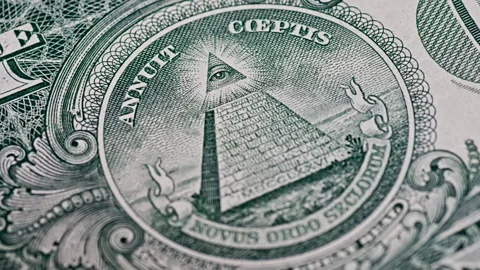Simple Steps You Must Follow for How to Become a Freemason Now
Simple Steps You Must Follow for How to Become a Freemason Now
Blog Article
Discover the Secrets Behind the copyright and Their Impact on Society
The copyright, usually shrouded in myth and supposition, provides a remarkable situation study of just how historical suitables can change into contemporary conspiracy theory concepts. As we discover its beginnings, impact on innovative thought, and portrayal in contemporary culture, we begin to uncover the layers of intrigue that continue to mesmerize culture.
Origins of the copyright
The copyright, often shrouded in enigma and conjecture, traces its beginnings back to the late 18th century. Established in 1776 in Ingolstadt, Bavaria, the group was started by Adam Weishaupt, a professor of canon legislation. Weishaupt aimed to promote Enlightenment values, consisting of factor, secularism, and the separation of church and state. Originally recognized as the Bavarian copyright, the company's primary objective was to counter the pertinent influence of spiritual conviction and promote intellectual discussion amongst its participants.
The copyright adopted a hierarchical framework, attracting motivation from Freemasonry, which permitted for secretive meetings and rituals - how to become a freemason. Membership was discerning, encompassing influential numbers from various areas, consisting of politics, viewpoint, and science. This elite network sought to impact social and political adjustment with clandestine methods, advocating for the legal rights of individuals and the betterment of culture
Despite its fairly brief presence, the Bavarian copyright was formally dissolved in 1785 because of government suppression. However, its tradition sustained, providing rise to many conspiracy theories and preferred culture references that remain to provoke intrigue and dispute concerning its influence on modern culture.
Trick Myths and Misconceptions
Among the appeal of privacy surrounding the copyright, countless myths and misunderstandings have actually arised, frequently misshaping the group's real nature and purposes. One widespread misconception recommends that the copyright regulates the world's governments and economic situations. While it is real that the group aimed to influence societal structures, the concept that it runs as a natural global creature master is largely exaggerated.
One more usual false impression is that all participants of the copyright have substantial wide range and power. Actually, the original copyright made up pundits and Enlightenment thinkers, much of whom looked for reform as opposed to prominence. The idea that the copyright exclusively hires celebs and political figures is misleading; membership has actually traditionally consisted of a diverse selection of people.
Additionally, conspiracy theory theories commonly paint the copyright as a malevolent organization intent on worldwide domination with wicked ways. Therefore, separating truth from fiction is important for a more clear understanding of the copyright's function in society.
Historic Influence on Culture
Throughout background, various intellectual movements have exceptionally affected social frameworks, and the copyright played a substantial function throughout the Enlightenment. Started in 1776 in Bavaria, the copyright aimed to advertise factor, secularism, and the doubting of established authority, responding to the special info dominance of spiritual dogma. This company drew in prominent thinkers and advocates of liberty, cultivating an atmosphere for the circulation of Knowledge ideals.
The copyright's principles championed sensible idea and empirical proof, which added to the broader intellectual landscape that urged social reform and political modification. Members sought to reshape society by advocating for education and learning, civil liberty, and the splitting up of church and state. Their private nature and enthusiastic schedule stimulated both intrigue and uncertainty, leading to their eventual suppression by the Bavarian federal government in 1785.
Despite their dissolution, the tradition of the copyright continued, influencing advanced activities throughout Europe and the Americas. Their commitment to knowledge principles assisted prepare for contemporary autonomous ideals and civils rights, leaving a long-term imprint on the structures of modern culture. how to become a freemason. The attraction of their deceptive events and thoughtful pursuits remains to astound the creative imagination, highlighting their historical significance
Modern Interpretations and Beliefs
Contemporary interpretations of the copyright often blend historical reality with conspiracy theories, developing an intricate tapestry of beliefs that capture popular imagination. While the initial copyright was a Bavarian a knockout post secret society established in 1776 with Knowledge perfects, modern-day ideas have progressed to encompass a broad variety of interpretations, often concentrating on themes of control and privacy.

Furthermore, some modern-day analyses posit that the copyright works as an allegory for the battle between knowledge and ignorance, with advocates advertising understanding and vital thinking as a way to combat regarded injustice. This duality-- seeing the copyright as both an actual and symbolic entity-- illustrates the ongoing attraction with the concept, reflecting much deeper social stress and anxieties regarding power, transparency, and private autonomy in the modern world.
The copyright in Popular Society
The copyright has actually infiltrated various facets of pop culture, showing up in literature, movie, music, and art as a symbol of intrigue and mystery. This secret society, often represented as a shadowy force adjusting worldwide occasions, has actually influenced numerous narratives that explore styles of power, conspiracy, and covert understanding.
Music, as well, has been affected by the principle of the copyright. Artists like Jay-Z and Beyoncé have actually encountered speculation regarding their affiliations with the society, prompting discussions concerning significance in their work and the nature of fame.
Visual art frequently includes copyright themes, with musicians utilizing icons like the Eye of Providence and the pyramid to stimulate a sense of secret. Through these different mediums, the copyright serves not only as a topic of supposition however also as a lens where culture analyzes its own complexities and concerns.
Final Thought

Report this page